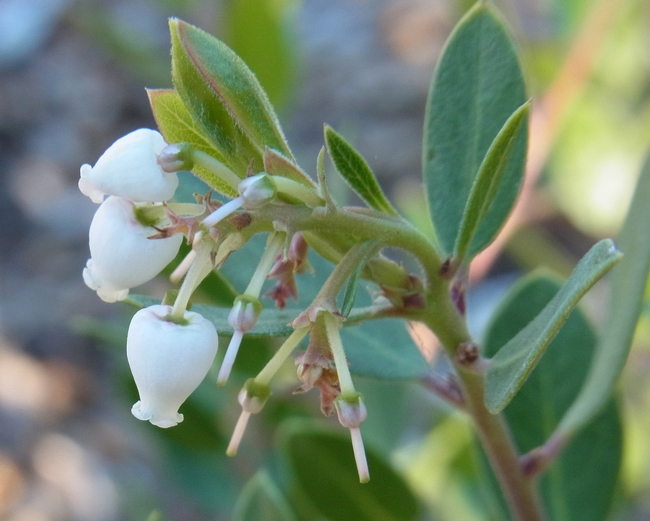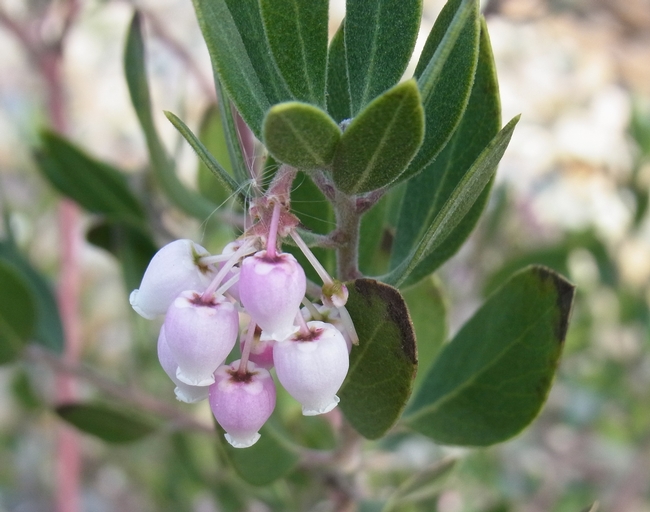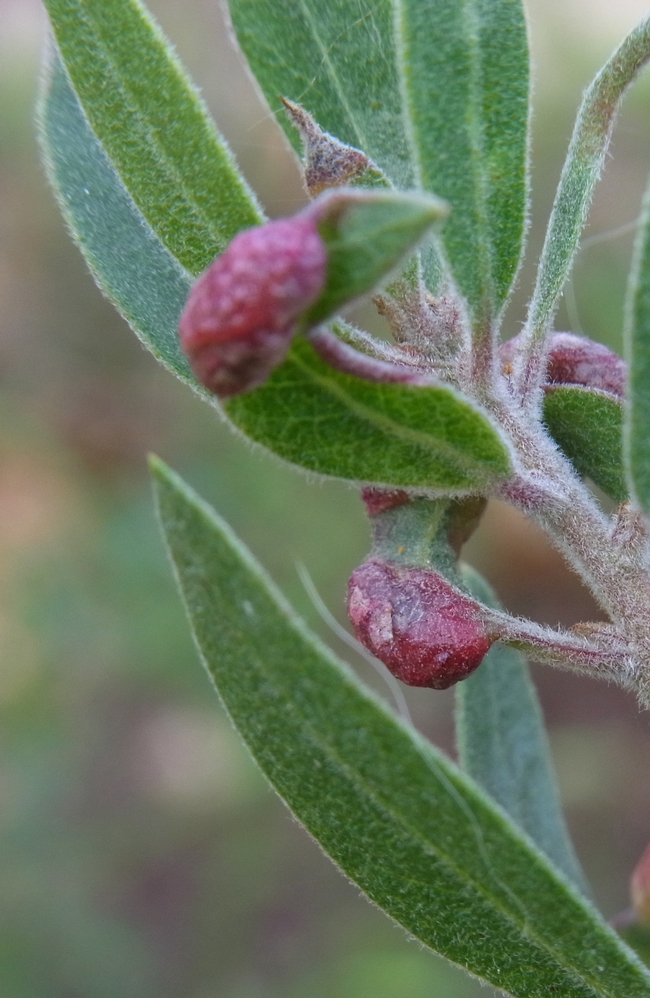Manzanitas (Arctostaphylos spp.) are a diverse group of California native plants that serve as a great winter resource for bees, especially native bees that fly early such as Osmia spp. and Bombus melanopygus. They are shrubs (mostly) and groundcovers (a few) that should be used in more California gardens. The waxy green leaves, peeling bark, smooth reddish to mahogany branches, and upright leaves are attractive throughout the year. These plants have stomates on both sides of the leaf so leaves are held perpendicular to the ground, rather than parallel, to minimize sun exposure and water loss. Some begin flowering in late fall, while most flower in January and February. In my own garden these held up well to drought this summer without any supplemental watering.
The California Native Plant Society has a nice article on this group; I also use the websites of Las Pilitas Nursery and California Flora Nursery to learn about new species for inclusion in the Honey Bee Haven.
According to California Bees and Blooms, two of the best for bees are the Arctostaphylos densiflora cultivars 'Sentinel' and 'Howard McMinn'. These two are also among the easiest to grow and fastest to reach mature size; the former tends to be upright while 'Howard McMinn' tends to be more rounded in shape. It is also the most adaptable; this UC Davis Arboretum All-Star can tolerate heavier soils than most manzanitas as well as some summer irrigation. Two other great cultivars for gardens are 'Austin Griffiths' and 'Sunset'.



Manzanitas host a gall aphid, Tamalia coweni. The aphid lays eggs in manzanita leaves and hormones secreted by the developing aphid induce formation of a gall on the leaves. Cut these open to view the developing aphids inside; they are not considered to be a plant pest.
